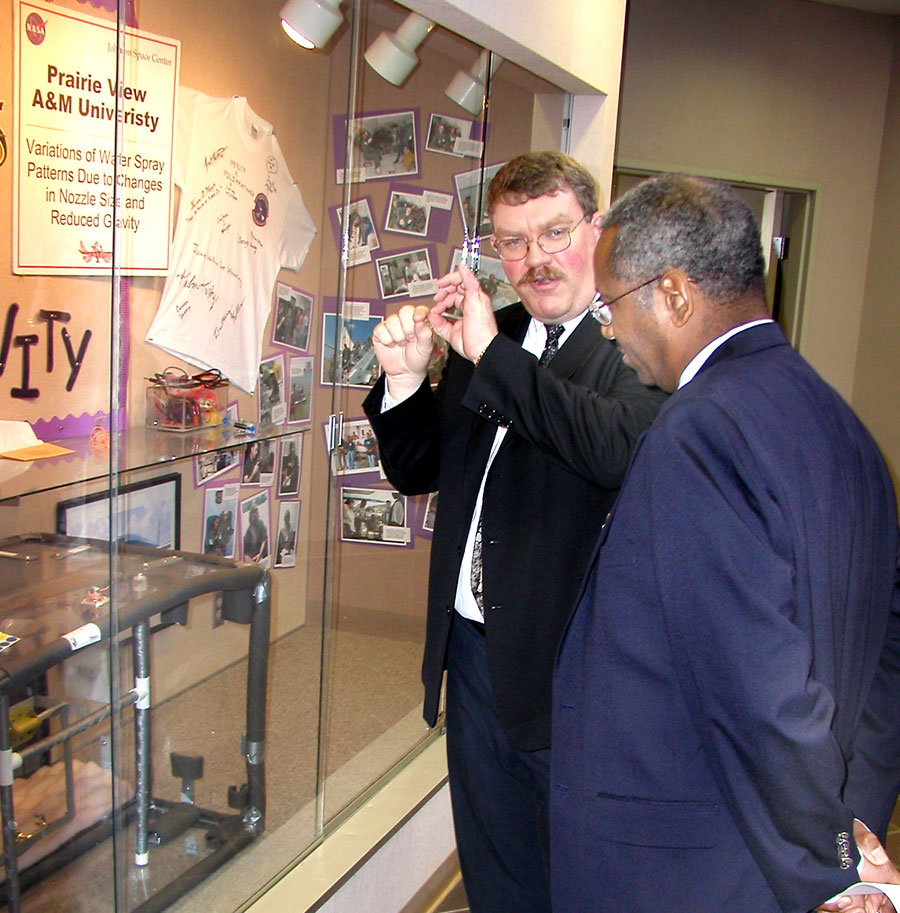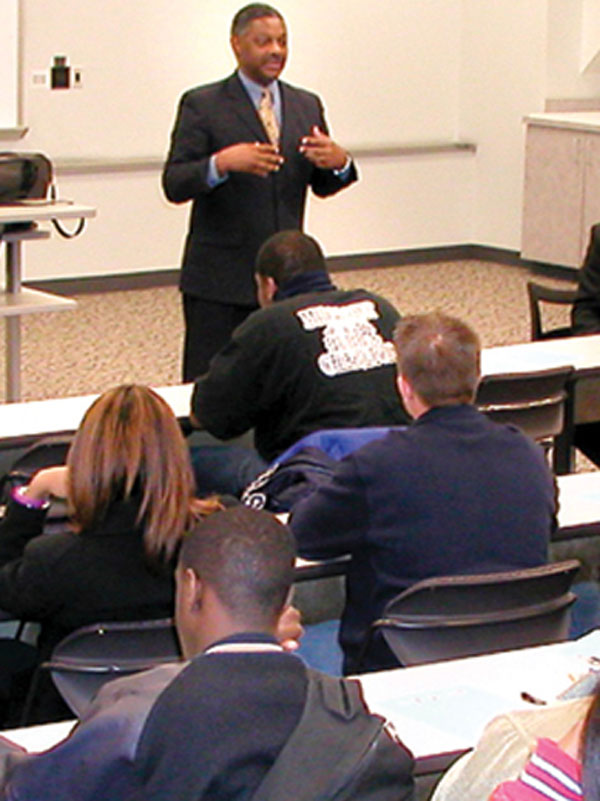$5 million NASA grant assures PVAMU of key leadership role in space radiation research

The National Aeronautics and Space Administration(NASA) has chosen a small, elite team of Prairie View A&M University (PVAMU) researchers to find ways of keeping astronauts and their delicate instruments safe from the harmful radiation that silently threatens flight crews and spacecraft once they leave earth’s protective atmosphere.
When man sets foot on the moon again and embarks on the first interplanetary spaceflight mission to Mars, researchers at the PVAMU Center for Radiation Engineering and Science for Space Exploration (CRESSE) want to make sure the issue of space environment radiation is way down on the list of things astronauts must be concerned about. Future space flights to Mars and back will expose humans and their electronic equipment to as much as three years of non-stop cosmic radiation.
Ultimately, CRESSE researchers will use a scientifically accurate “recipe” of earthly materials to create “bricks” of simulated Martian and lunar soil in order to build above-ground and underground “habitats” on our home world. Scientists will bombard these habitats with carefully chosen radiation particles with energies that mimic the expected surface and subterranean exposures on Mars and the moon. NASA will be able to use the data as a stepping stone for further experiments to minimize the dangers of radiation, one of the limiting factors to human space exploration.
It will be the center’s responsibility to discover new ways to protect spacecraft and their fragile contents on long mission durations. Fundamental physics and meticulous measurements taken from earth-bound high fidelity dosimetry, biology and shielding experiments will  “characterize” the radiation effects that space travelers, equipment and payloads can expect during 1,000-day missions.
“characterize” the radiation effects that space travelers, equipment and payloads can expect during 1,000-day missions.
Principal Investigator Dr. Richard Wilkins said the center will focus on radiation research directly applicable to astronaut health and safety during spaceflight missions.
Experimental and theoretical radiation studies will utilize leading-edge particle accelerators at Brookhaven National Laboratory, Loma Linda University Medical Center, Los Alamos National Laboratory and others.
A companion goal is to attract and engage more of the nation’s underrepresented minorities in technically challenging, multi-disciplinary scientific and engineering disciplines that contribute substantially to NASA programs. Deputy Director Dr. Kelvin Kirby said CRESSE will support three doctoral, 12 masters and approximately 20 undergraduate researchers. Kirby has pledged to ensure that Prairie View A&M University will continue to provide NASA with a steady pipeline of highly-qualified minority graduates holding advanced degrees and the technical and research skills to fill NASA’s future aerospace manpower needs.
